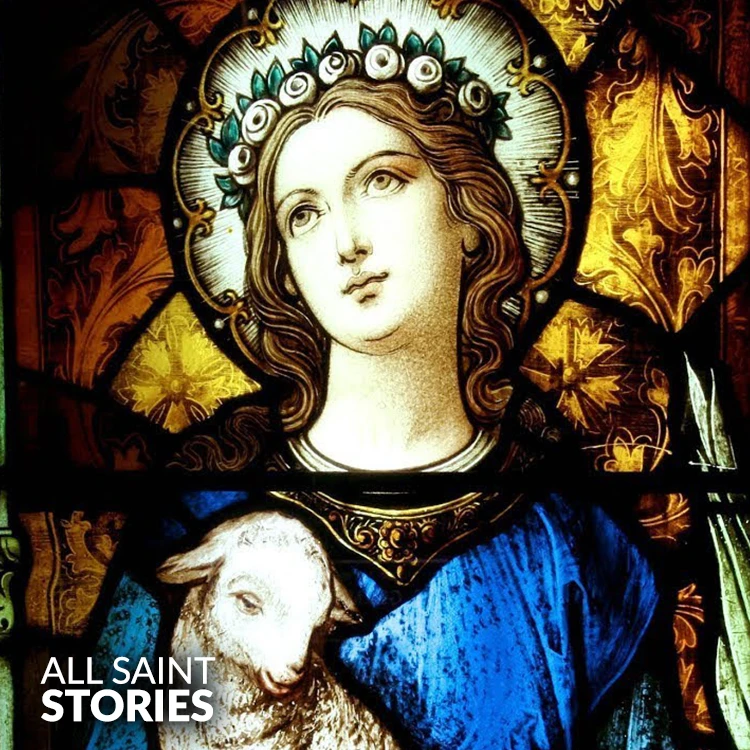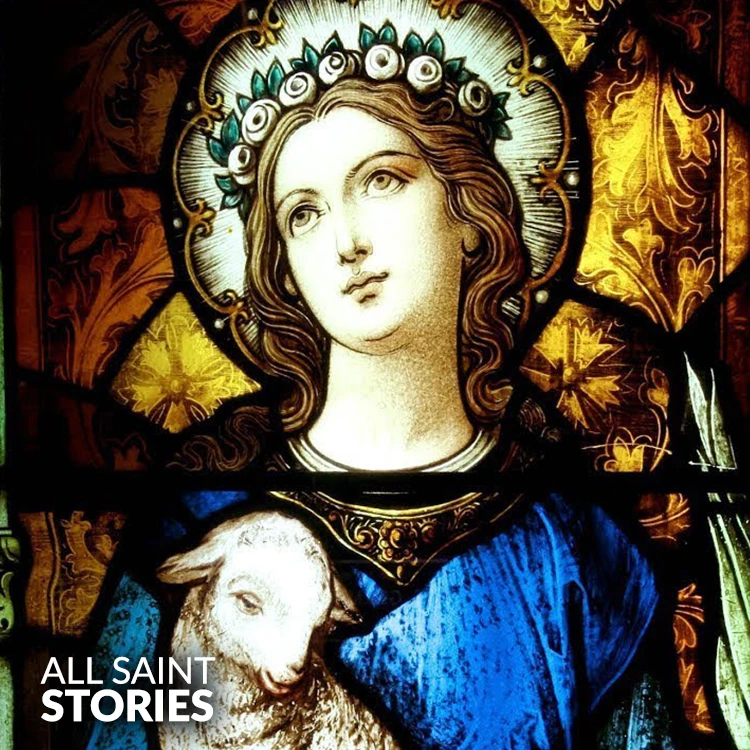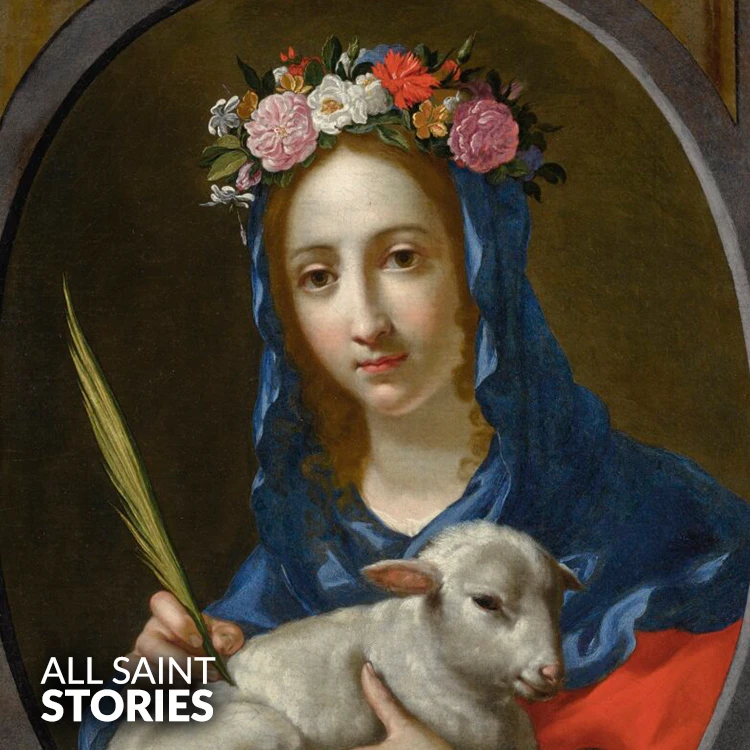St. Agnes, pure and faithful martyr, You gave your life for the love of Christ. Intercede for us, that we may remain steadfast in faith, strong in purity, and courageous in our devotion. Help us to live with the same love and commitment that you showed in your life and death. Amen.
ST. AGNES OF ROME
ST. AGNES OF ROME

St. Agnes of Rome was a young Roman virgin and martyr, known for her beauty, purity, and strong devotion to Christ. Martyred at age 12 or 13 during Diocletian's persecution, she is honored as the patron saint of girls and chastity. Her feast day is celebrated on January 21.
St. Agnes of Rome lived during the late third and early fourth centuries, a time of intense persecution for Christians under the Roman Empire. Born around 291 AD into a noble Roman family, Agnes was raised in a society where marriage was often used for social or political advantage. However, from a young age, she made a vow of chastity, declaring her unwavering commitment to Christ as her only spouse.
Her striking beauty attracted many suitors, but Agnes rejected them all, explaining that she had consecrated her virginity to God. One of the rejected suitors, who was the son of a Roman prefect, retaliated by reporting her as a Christian — a dangerous accusation at the time, particularly under Emperor Diocletian, who was notorious for his brutal crackdowns on Christians.
Agnes was arrested and brought before Roman authorities. Despite threats and persuasion, she remained firm in her faith. In an attempt to break her resolve and humiliate her, officials ordered that she be stripped and dragged to a brothel. According to tradition, a miraculous event occurred: her hair grew rapidly, covering her body to protect her modesty. Furthermore, any man who attempted to approach her was struck blind or fell down.
Unable to sway her faith, the authorities condemned her to death. Accounts differ, with some claiming she was burned at the stake, while others state she was executed by the sword. Regardless of the method, she met her fate with remarkable peace and courage, praying and praising God until the end.
Her burial site became a place of pilgrimage, and over her tomb, the Basilica of Sant'Agnese fuori le mura was built, which still stands today in Rome. Her name is among the few female saints mentioned in the Roman Canon, highlighting her enduring reverence in the Church.
Each year on her feast day, January 21, two lambs are blessed in her honor. Their wool is later used to make the pallium — a special liturgical vestment worn by archbishops — symbolizing unity with the Pope and the Church of Rome. The symbolism of the lamb also ties back to her name, “Agnes,” which resembles the Latin word “agnus,” meaning lamb, a universal Christian symbol of purity and sacrifice.
Though canonization as we know it did not exist during her time, Agnes has been venerated as a saint since the earliest centuries of Christianity. Her youthful courage, deep spiritual conviction, and the miraculous elements of her martyrdom have made her a timeless icon of faith, especially for the young and those who strive for purity and spiritual strength.
Video Not Found
The information on this website is compiled from various trusted sources. While we aim for accuracy, some details may be incomplete or contain discrepancies.
If you notice any errors or have additional information about this saint, please use the form on the left to share your suggestions. Your input helps us improve and maintain reliable content for everyone.
All submissions are reviewed carefully, and your personal details will remain confidential. Thank you for contributing to the accuracy and value of this resource.
Credits & Acknowledgments
- Anudina Visudhar (Malayalam) – Life of Saints for Everyday
by Msgr. Thomas Moothedan, M.A., D.D. - Saint Companions for Each Day
by A. J. M. Mausolfe & J. K. Mausolfe - US Catholic (Faith in Real Life) – Informational articles
- Wikipedia – General reference content and images
- Anastpaul.com – Saint images and reflections
- Pravachaka Sabdam (Malayalam) – Saint-related content and insights
We sincerely thank these authors and platforms for their valuable contributions. If we have unintentionally missed any attribution, please notify us, and we will make the correction promptly.
If you have any suggestion about ST. AGNES OF ROME
Your suggestion will help improve the information about this saint. Your details will not be disclosed anywhere.
© 2025 Copyright @ www.allsaintstories.com






 English
English
 Italian
Italian
 French
French
 Spanish
Spanish
 Malayalam
Malayalam
 Russian
Russian
 Korean
Korean
 Sinhala
Sinhala
 Japanese
Japanese
 Arabic
Arabic
 Portuguese
Portuguese
 Bantu
Bantu
 Greek
Greek
 German
German
 Dutch
Dutch
 Filipino
Filipino